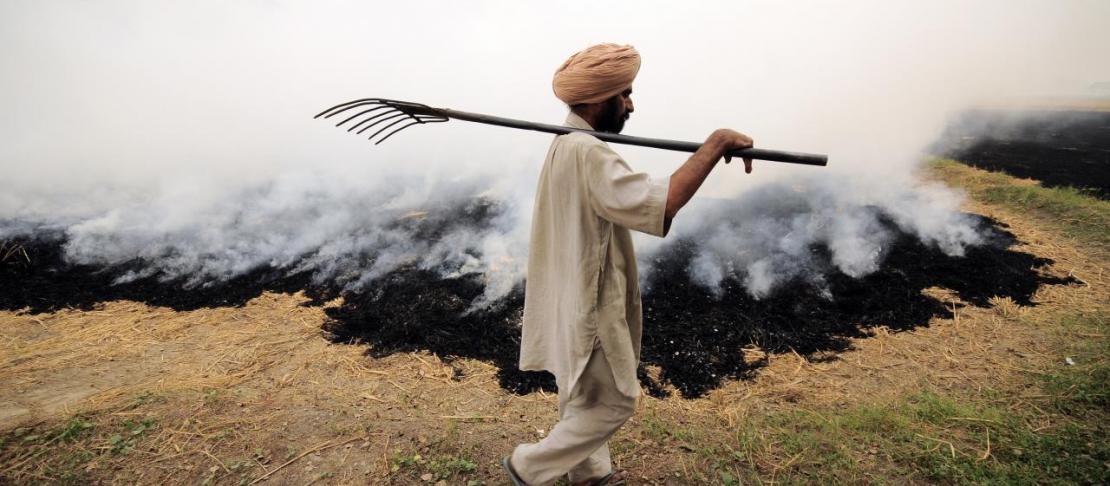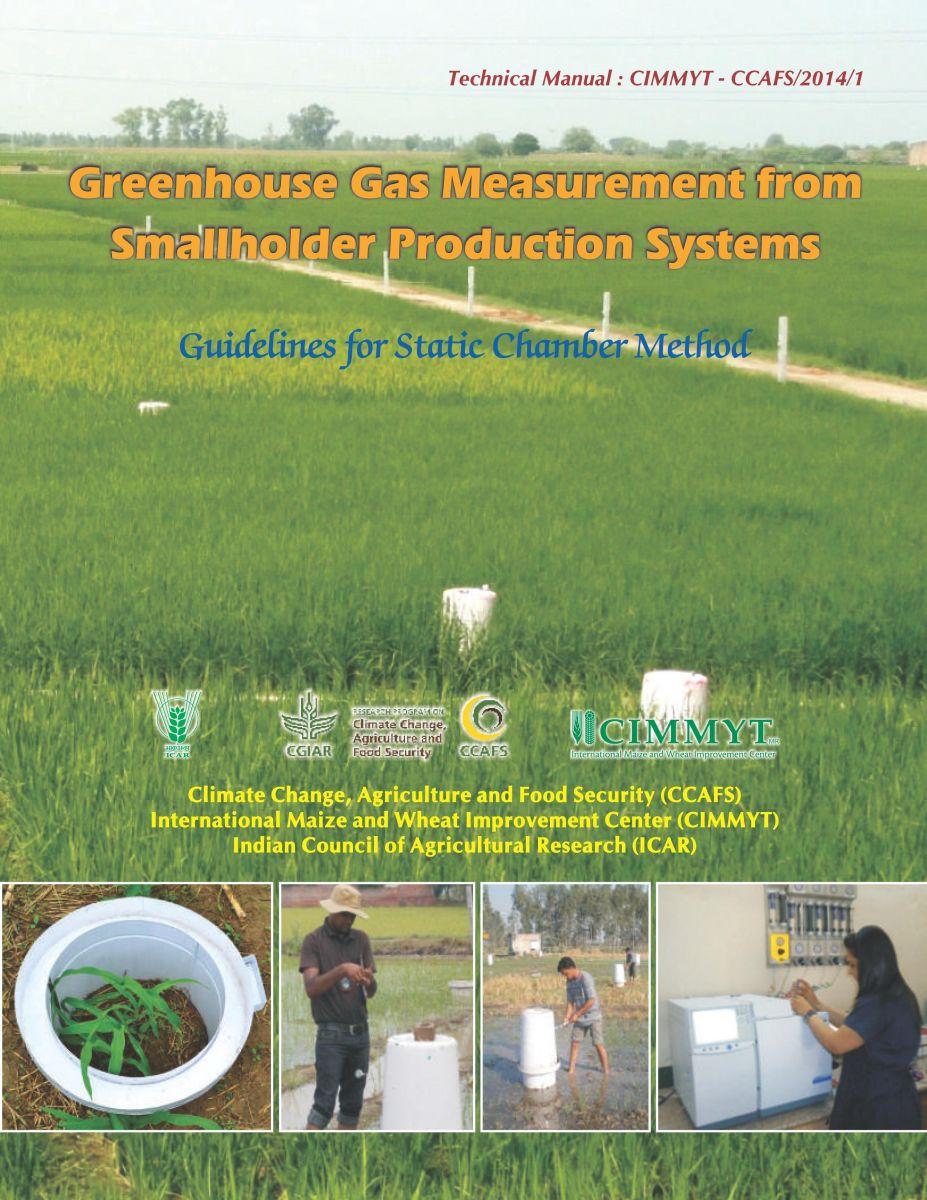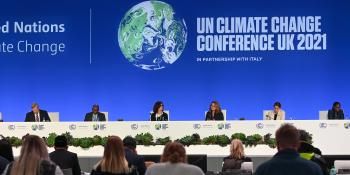New manual on guidelines to measure greenhouse gas emissions in smallholder systems

When undertaking experiments to quantify the emissions from farm land, many factors can influence the results. Researchers from CIMMYT and the Indian Council for Agricultural Research (ICAR) have developed a set of protocols for these experiments.
Agriculture is a victim of climate change. Rising temperatures, erratic rainfall and extreme weather events can lower productivity, destroy harvests and threaten food security and livelihoods.
But this is only half the story. Agriculture also contributes to climate change. Even by modest estimates, it is responsible for nearly 14 percent of greenhouse emissions - primarily through nitrous oxide, methane and carbon dioxide. When land conversion and deforestation are taken into account, the figure is closer to 30 percent.
The good news is that agriculture is also capable of sequestering carbon and storing it in the soil, thereby reducing emissions into the atmosphere. Adaptive and productive practices that are inherently low-carbon is one way to ensure that, while farmers are protected from the impacts of climate change and continue to produce food sustainably, they are not simultaneously adding to the crisis.
Why quantify emissions from agriculture?
Understanding the dynamics of fluxes - the exchange of gases - between agricultural fields and the atmosphere is essential if we want to know the contribution of farm practices to greenhouse gas emissions. As we turn towards sustainable development pathways, quantifying emissions from agricultural production systems is a critical area of scientific investigation. This research can help farmers, scientists and policymakers understand how mitigation can be integrated into policy and practice.
Scientists at the International Wheat and Maize Improvement Center (CIMMYT), supported by the CGIAR Research Programme on Climate Change Agriculture and Food Security (CCAFS), together with scientists from the Indian Council of Agricultural Research have brought out guidelines to measure greenhouse gas emissions using static chamber-based technique. A manual titled: Greenhouse Gas Measurement From Smallholder Production Systems, sets out protocols of standard of practice. This would also make comparisons between different emission studies more meaningful.
View the slideshow to see how closed chamber are used to measure emissions on fields
The chamber-based flux technique is a very widely used technique to measure greenhouse gas emissions. More than 95 percent of the thousands of published emission studies have used this method.
It is particularly suitable for measuring greenhouse gas emissions in smallholder systems in developing countries, mainly because it is relatively inexpensive, versatile to many field conditions and the technology is very easy to adopt,”
says A.K Sikka, Deputy Director General, Natural Resource Management, ICAR, in the foreword to the manual.
How the chamber-based flux measurement technique works
The closed chambers is to accumulate the soil flux of greenhouse gases in the chamber's headspace. The increase in gas concentration over time essentially indicates the amount of flux from the soil. To carry out these experiments, chambers are placed in specific locations on the agriculture plot. At certain time intervals, air samples are physically extracted from the chamber at using an air-tight syringe.
The concentration of greenhouse gases in the air samples is quantified in a gas chromatograph. The soil flux of greenhouse gases is calculated through regression of the gas concentration with time.
Harmonising procedures for better results
This method for measuring emissions is relatively simple but several factors can influence the final results. The materials used in chamber components, the frequency of sampling, storage of the sample and the method of calculation, can make results vary.
In order to minimise such variability, the new manual can guide users on how to maintain minimum standards while carrying out these experiments. Harmonising standard procedures will also lead to better inter-study comparisons and to assess the reliability of results that emerge from different studies.
The manual by scientists from CIMMYT and ICAR sets out guidelines for carrying out GHG measurements
This technique can be used to measure emissions at the field and farm level. The information obtained from chamber-based method can be used to refine and calibrate simulation models for large scale greenhouse gas estimations, an essential component of the national emission inventories.
The only limitation with this method is the uncertainty associated with the temporal and spatial variability of fluxes.
Related blogs:
Gas pooling: the best way to measure soil emissions more efficiently?
Reducing agriculture emissions while maintaining yields - can it be done?
Moving mitigation forward: Improving quantification of agricultural greenhouse gases
Tek Sapkota is a Mitigation Agronomist at the International Maize and Wheat Improvement Center (CIMMYT), based in New Delhi, India.
This blog was edited by Dharini Parthasarathy, Communications Specialist for CCAFS South Asia.




